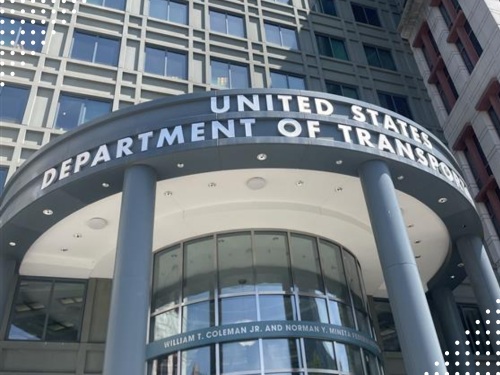The Federal Highway Administration issued new guidance for its signature highway safety programs on February 2 to help manage what the agency calls a “substantial” influx of new funding from the $1.2 trillion Infrastructure Investment and Jobs Act or IIJA signed into law in November 2021.
[Above photo by the Oregon DOT]
The agency said its new guidance seeks to ensure the “strategic use” of IIJA funding to make travel safer, including protections for people outside of vehicles, such as those walking, biking, or using mobility assistive devices – thereby helping reduce the number of lives lost on the nation’s highways, bridges, and roads.

FHWA added its new guidance also complements the new National Roadway Safety Strategy unveiled by the U.S. Department of Transportation on January 27.
The guidance also notes that, “except for the statutes and regulations cited, the contents of this document do not have the force and effect of law and are not meant to bind the states or the public in any way. This document is intended only to provide information regarding existing requirements under the law or agency policies.”
Because of its new guidance, FHWA said it is making changes to its Highway Safety Improvement Program or HSIP to help state, local, and tribal transportation agencies save lives on the roads and bridges they own and operate. The agency said HSIP funding levels from 2016 to 2020 under the Fixing America’s Surface Transportation or FAST Act totaled $11.5 billion and will now rise to $15.6 billion from 2022 to 2026 due to the IIJA.

FHWA recommends that HSIP funds be used to incorporate a more data-driven, holistic and equitable “Safe System Approach” to roadway safety: building in redundancies so if one element of a transportation system fails, other elements provide protection to save lives and prevent serious injuries on U.S. roads.
HSIP places a focus on infrastructure safety improvements and the IIJA gives states more flexibility to use up to 10 percent of their HSIP funds for “specified safety projects.”
Such projects include non-infrastructure safety projects like public awareness campaigns, research, automated traffic enforcement systems, emergency services, and efforts to protect children such as “Safe Routes to School” activities. The new guidance will also allow certain pedestrian and bicyclist projects to receive 100 percent federal funding
FHWA is also adding a new “Vulnerable Road User Safety” special rule to the HSIP. Under the new rule, if vulnerable road users make up 15 percent or more of the total number of fatalities in a state in a given year, the state is required to dedicate at least 15 percent of its HSIP funds the following fiscal year to projects that address the safety of these road users.
“FHWA’s goal is to help state and local transportation agencies across the country deliver projects that make streets, highways, and bridges safe and accessible for all users,” said Stephanie Pollack, FHWA’s deputy administrator, in a statement.
Due to the IIJA, “states [will] now have more flexibility and funding to make highway safety improvements,” she added.
 Nation
Nation

